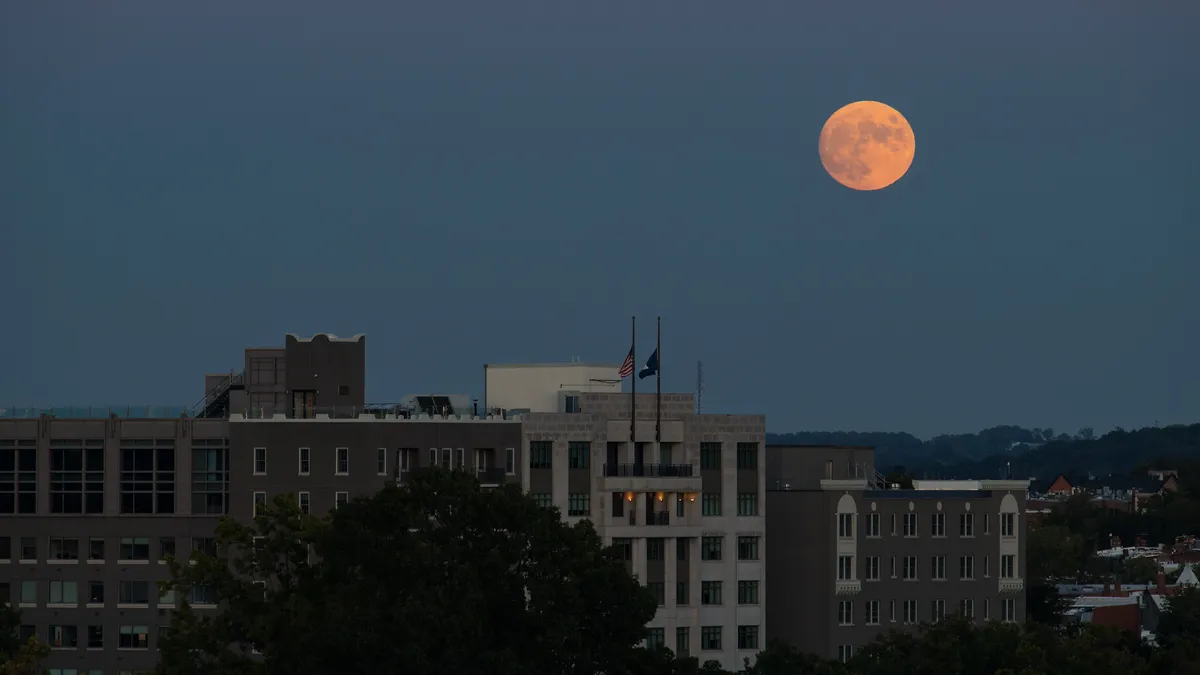Dive Brief:
- NASA has continued its development of lunar infrastructure with grants to three universities that are creating space-capable technology, the agency announced on Feb. 18.
- The three schools — the Colorado School of Mines, Auburn University and Missouri University of Science & Technology — will receive up to $2 million in funding over two years to pursue research, which varies from resource extraction to devices that can weather the harsh conditions of space, according to the release.
- The grantees' technologies must combat several large roadblocks to working in space, such as temperature changes, a lack of atmosphere and lunar regolith, or moon dust, which pose a threat to electronics.
Dive Insight:
Working in space is "a very inhospitable environment, not just for humans, but also for machines," Raymond 'Corky' Clinton, the leader of NASA's Moon-to-Mars Planetary Autonomous Construction Technology project, told Construction Dive last October.
The research aims to eventually support astronauts and space-dwellers as they work to make the moon more habitable. The selected projects are:
- Autonomous construction: Researchers at the Colorado School of Mines will develop tech that will make construction by robots on the moon’s surface possible.
- Extracting resources: Missouri University of Science & Technology will use magnetic and electrostatic technology to separate aluminum- and calcium- containing material from moon dust to better extract resources.
- Extremely cold electronics: Auburn University will develop technology that can resist the extreme cold temperatures of the moon, which can drop far below zero on the dark side of its surface.
The universities were selected under the second Lunar Surface Technology Research (LuSTR) solicitation, a bid program that looks to advance technologies for lunar surface exploration. The program exists under the umbrella of NASA's Space Technology Research Grants program, which supports groundbreaking academic research, according to the release.
Prasun Desai, deputy associate administrator of the Space Technology Mission Directorate at NASA, emphasized the necessity of cooperation between government and academic spheres for successful space exploration.
"These projects show the integral role that universities will play in building humanity's sustainable presence on the moon," Desai said in the release.
In an interview with St. Louis Public Radio, Missouri University of Science & Technology principal investigator Leslie Gertsch expressed enthusiasm for the applications that the research would have on Earth, as well as in space.
"What more can we understand about the way physics works if we have another data point besides this one particularly special planet? That is going to be so utterly fascinating," Gertsch said in the interview.














